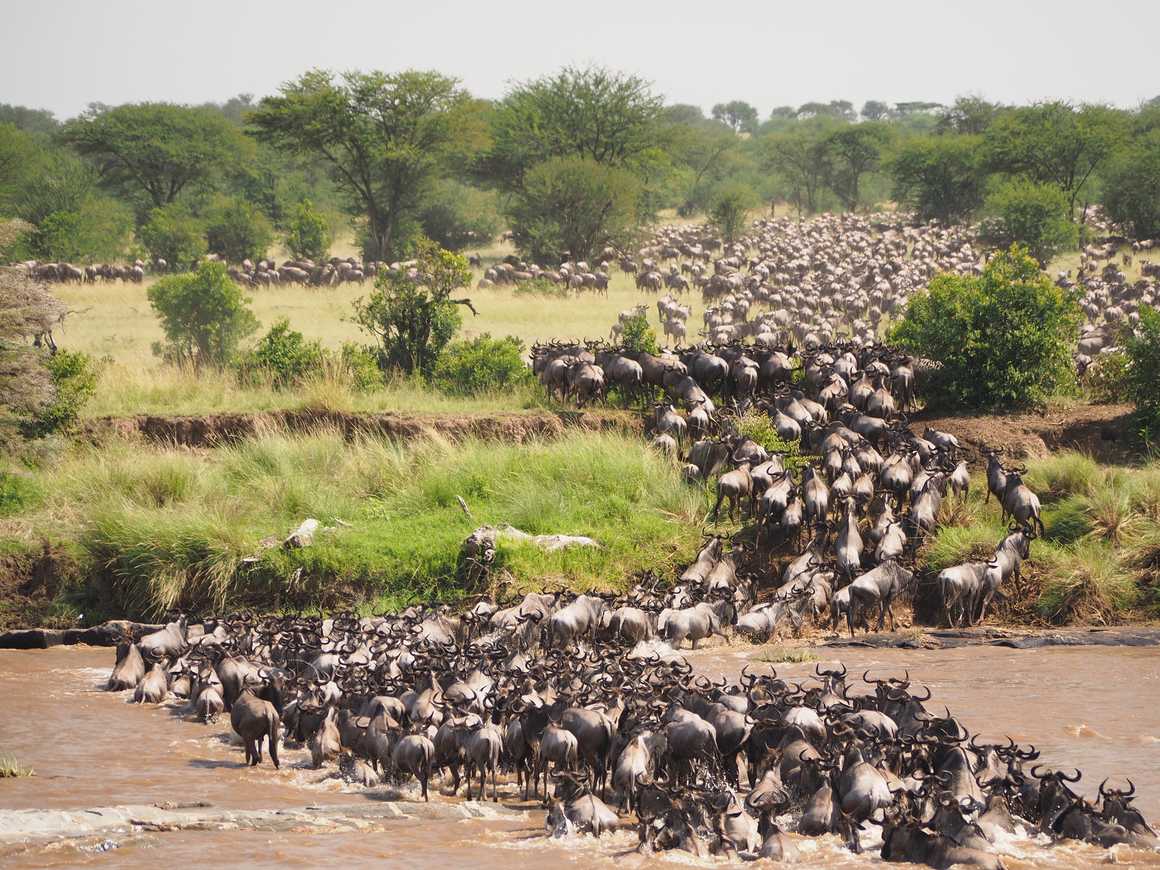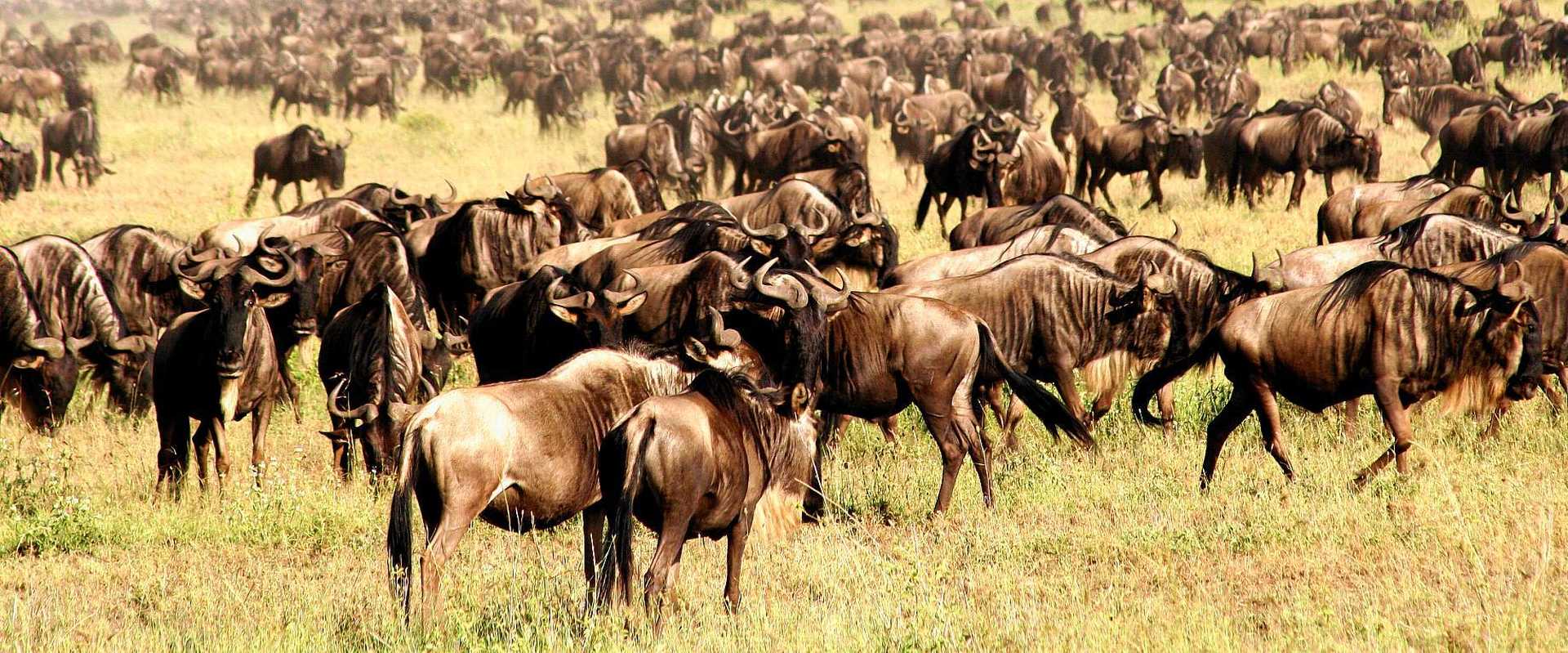In Tanzania Whilst Tanzania is home to a plethora of eco-systems, and exotic sites, nothing can compare to Great Wildebeest Migration that sweeps across the Serengeti every year.
The migration is quite simply one of the most spectacular and memorable things anyone can see on this planet. The natural phenomenon is as old as the land itself and locals can pretty much set their watches and calendars to it. The seasonal rainfall is the catalyst that sparks the annual event. Mega herds over a million strong move across the plains in search of fresh grass and watering holes. Wildebeest, zebra and half a million gazelle all make the long journey in search of food.
The migration takes a full year to complete as the wildebeest make their way up through the Serengeti and into Kenya before returning back south. Being a yearly cycle, this means that the migration can be seen all year-round. however, when you choose to view the the migration will very much depend upon what you want to see.
To help you decide, we have written a short guide the best time to see the Wildebeest Migration in Tanzania.

December to March
Responding to the rains beginning in November, the migration begins to make its way through the Masai Mara and onto Tanzanias Southern Serengeti plains and northern Ngorongoro conservation area. Through January and February the migration spread out across the southern Serengeti. This is the calving season for the migration and safari goers will be able to witness over half a million new born calves taking their first teetering steps on the planet. If the grasses remained green and lush all year-round, the migration would never leave this area. Because of the calves, this is also a fantastic period to see big predator hunts looking to take advantage of the newly born calves. Witness lions, cheetahs and leopards stalking the young animals. If you’re lucky you’ll see the fastest mammal on our planet in action! Whist this is a fantastic time to see hunting practises, this is also the wet season and you’ll will assuredly be exposed to much rain that may dampen certain spirits. The long grass and thick foliage also makes this the most difficult time to spot animals.
April to June
April marks the beginning of the yearly migration. As the grass withers and the watering holes dry up, mega herds begin their long march north in search of fresh grazing. The long lines of wildebeest marching across the plains at sunset always makes for a fantastic shot! By June the migration has made its way into short grasslands of central Serengeti where the male wildebeest begin the annual rut. Seeing the males buck and fight for the female is a fantastically powerful image and one that never ceases to impress. The huge herds attract many predators and the short grasses of the central Serengeti make viewing opportunities far easier than earlier in the year. This may jut be the best time to spot a full blown hunt!
July to November
As the central plains dry up the mass migration continues its journey northwards to the rivers and watering holes of Kenya. Here the migration generally splits in two with most of the herd heading north-west whilst smaller groups take the north route, avoiding the infamous Grumeti River. For the larger group, the Grumeti River poses the biggest threat of the entire journey. Steep banks lead into the Grumeti River where crocodiles wait in large numbers to kill. If you are lucky enough to be in the right place at the right time then you will have the privilege of witnessing one of natures most spectacular events. Herds of wildebeest storming down the dusty banks, all barging into the perilous waters as they desperately hope they're not the ones to be taken. The crocodiles in wait burst out of the water dragging the wildebeest deep under water.
If you have any other questions regarding the best time to see the Wildebeest Migration in Tanzania please just contact us here.










